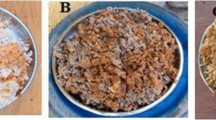Abstract
The number of laboratories performing microbiological analyses of wines has gradually increased in recent years over the world. However, the lack of regular proficiency testing schemes (PTS) in this field is an obstacle for the monitoring of the laboratory performance. The complexity of wine matrix in terms of bacterial ecology and biochemical aspects is a factor to be taken into account in developing a PTS, especially during the preparation of stable and homogeneous samples. Since February 2016, BIPEA set up tests on Brettanomyces analyses in wine, gathering more than 20 laboratories around the world. For each test, the statistical treatment of the data is performed according to ISO 13528. The assigned and tolerance values are calculated from the participants’ data, and the performances of the laboratories are evaluated individually and collectively according to ISO/IEC 17043 and ISO/DIS 22117. The results obtained in these first tests are satisfactory with a progressive improvement of the dispersion of participants’ results over the series. These data confirm that participating in a PTS is particularly important for the laboratories in order to assess and improve analytical performances and to obtain recognition of their analytical procedures by the accreditation bodies according to ISO/IEC 17025.



Similar content being viewed by others
References
Moreno-Arribas MV, Polo C (2008) Wine chemistry and biochemistry. Springer, New York
Lonvaud-Funel A, Renouf V, Strehaiano P (2010) Microbiologie du vin, Bases fondamentales et applications. Lavoisier, Paris
Vigentini I, Romano A, Compagno C, Merico A, Molinari F, Tirelli A, Foschino R, Volonterio G (2008) Dekkera/Brettanomyces bruxellensis strains under wine-model conditions. FEMS Yeast Res 8:1087–1096
Renouf V, Lonvaud-Funel A, Coulon J (2007) The origin of Brettanomyces bruxellensis in wines: a review. J Int Sci Vigne Vin 41:161–173
Suárez R, Suárez-Lepe JA, Morata A, Calderón F (2007) The production of ethylphenols in wine by yeasts of the genera Brettanomyces and Dekkera: a review. Food Chem 102:10–21
Iland P, Grbin P, Grinbergs M, Schmidtke L, Soden A (2007) Microbiological analysis of grapes and wine: techniques and concepts. Patrick Iland Wine Promotions, Campbelltown
Bonder C (2014) Analyses et décisions en œnologie, Guide pratique du laboratoire et de la cave, 46: 381–400. Lavoisier, Paris
Cocolin L, Rantsiou K, Iacumin L, Zironi R, Comi G (2004) Molecular Detection and Identification of Brettanomyces/Dekkera bruxellensis and Brettanomyces/Dekkera anomalus in Spoiled Wines. Appl Environ Microbiol 70(3):1347–1355
Phister TG, Mills DA (2003) Real-time PCR assay for detection and enumeration of Dekkera bruxellensis in wine. Appl Environ Microbiol 69(12):7430–7434
Cecchini F, Iacumin L, Fontanot M, Comuzzo P, Comi G, Manzano M (2013) Dot blot and PCR for Brettanomyces bruxellensis detection in red wine. Food Control 34:40–46
International Organisation for Vine and Wine—OIV (2017) Compendium of international methods of wine and must analysis, vol 2, section 4
ISO 13528:2015 Statistical methods for use in proficiency testing by interlaboratory comparison
ISO/IEC 17043:2010 Conformity assessment—general requirements for proficiency testing
ISO/IEC 17025:2005 General requirements for the competence of testing and calibration laboratories
ISO/DIS 22117:2018 Microbiology of the food chain—specific requirements and guidance for proficiency testing by interlaboratory comparison
Acknowledgements
BIPEA acknowledges all the laboratories for participating in these PTS.
Author information
Authors and Affiliations
Corresponding author
Rights and permissions
About this article
Cite this article
Mazzoni, C., Boubetra, A., Nguyen, S. et al. Microbiology proficiency testing schemes in wine. Accred Qual Assur 24, 43–48 (2019). https://doi.org/10.1007/s00769-018-1342-8
Received:
Accepted:
Published:
Issue Date:
DOI: https://doi.org/10.1007/s00769-018-1342-8




